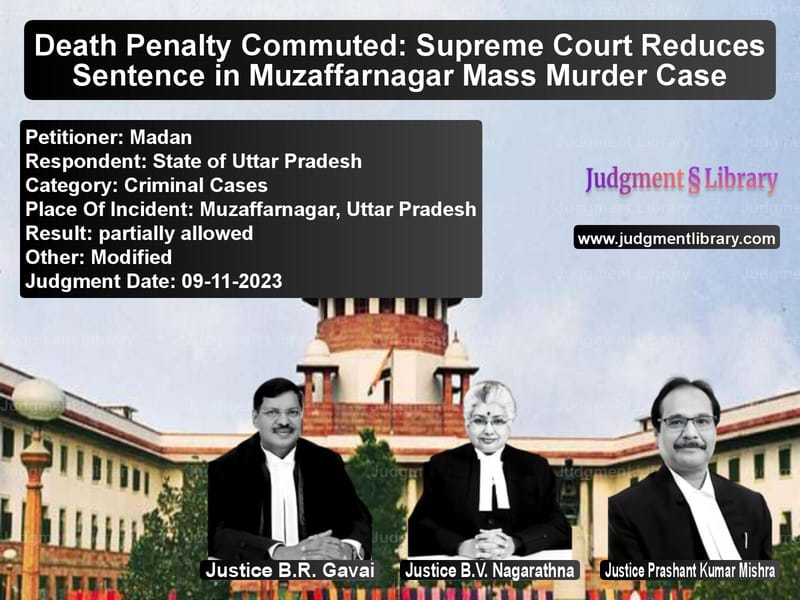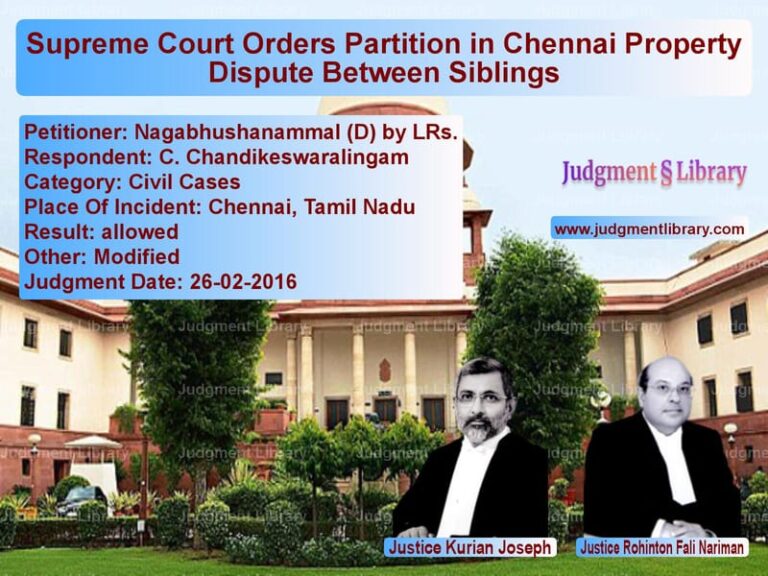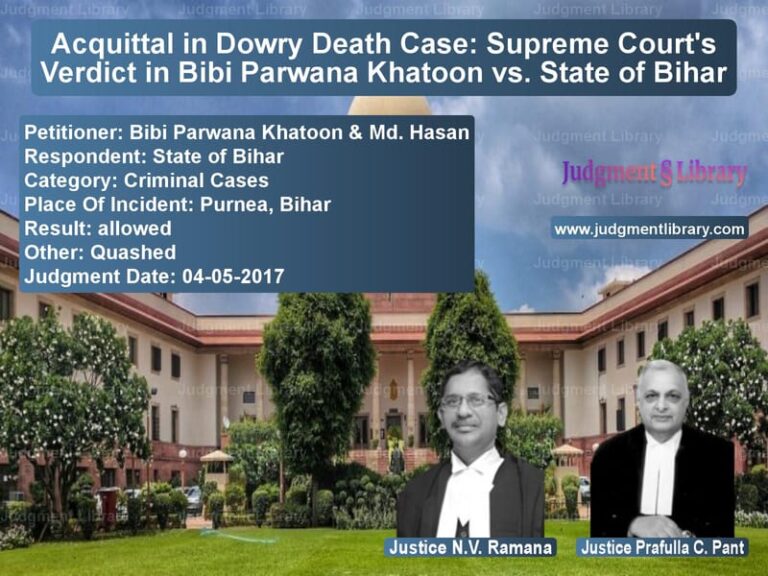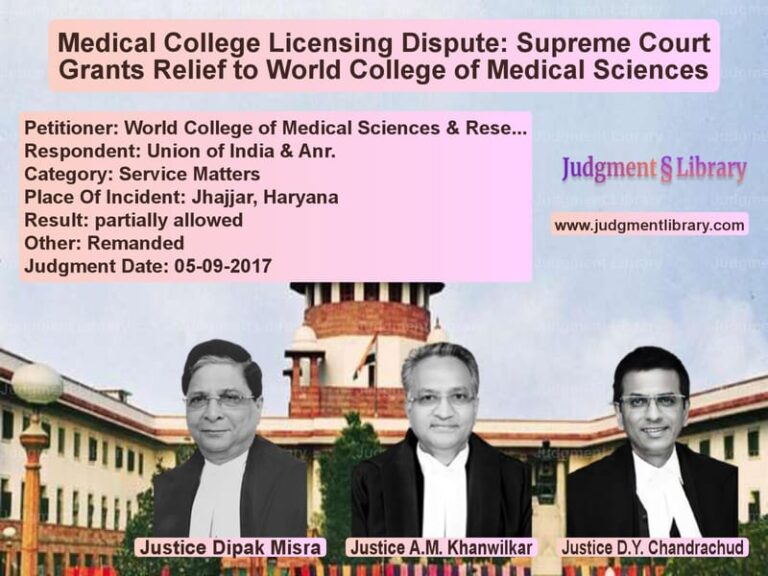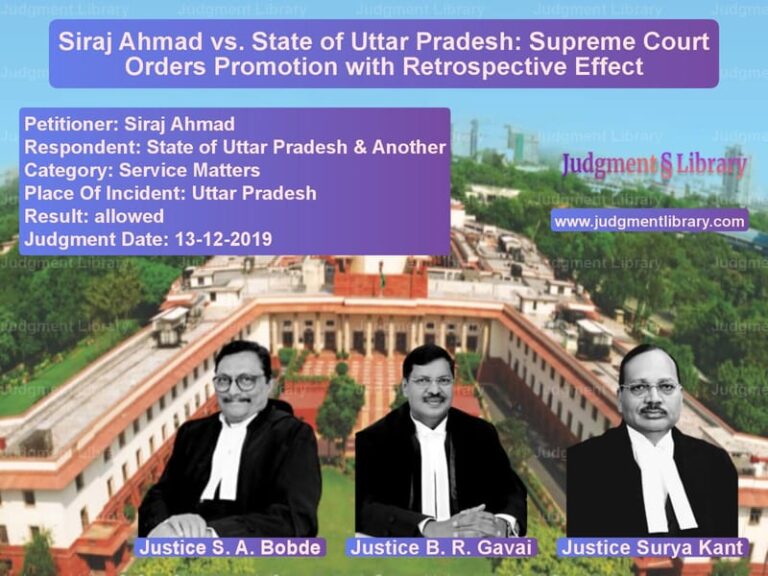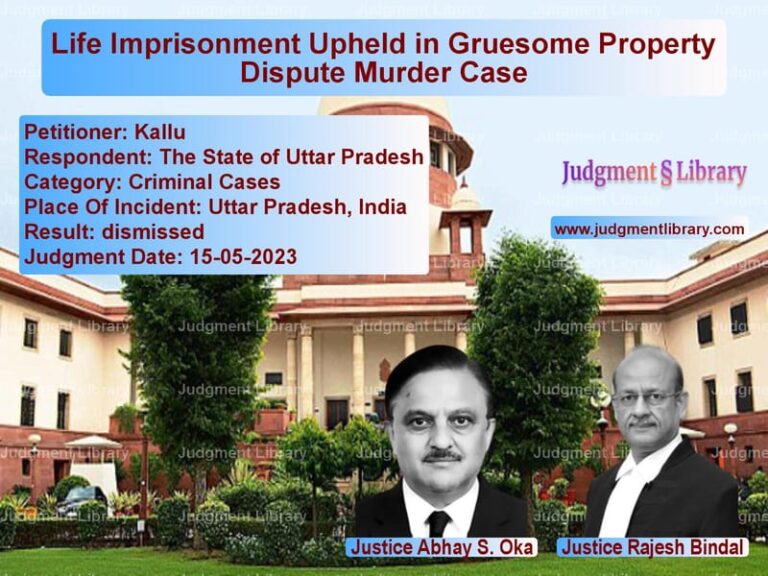Death Penalty Commuted: Supreme Court Reduces Sentence in Muzaffarnagar Mass Murder Case
The case of Madan vs. State of Uttar Pradesh revolves around a mass murder incident in Muzaffarnagar, Uttar Pradesh, which led to the conviction of multiple accused under Sections 148, 449, 302 read with 149, 307 read with 149, and 323 read with 149 of the Indian Penal Code (IPC). Initially sentenced to capital punishment, the Supreme Court reconsidered whether the death penalty was justified or if a lesser sentence was more appropriate.
Background of the Case
The case stems from a gruesome incident on October 14, 2003, which resulted in the deaths of six people. The killings were linked to political rivalry following a Gram Panchayat election where Vimla Devi, the mother of one of the victims, was elected as Gram Pradhan. The accused, led by Madan and others, allegedly bore a grudge against the victims due to the election results.
According to the prosecution, the accused, armed with firearms, attacked their political rivals. The victims, including Satendra, Sunil, Ram Kishan, Rizwan, and Rihan, were shot in two separate locations. The attack was described as brutal, with the accused allegedly entering homes and shooting victims at close range. The prosecution claimed that the incident was premeditated, and the accused aimed to eliminate their political opponents.
Petitioner’s Arguments
The appellant, Madan, contended:
- There were inconsistencies in the prosecution’s case, particularly in witness testimonies.
- The alleged eyewitnesses were politically motivated and had given contradictory statements.
- There was no forensic evidence linking him directly to the crime.
- The death penalty was excessive given that other accused in the case had received lesser sentences.
- His prison record showed that he had reformed, and there was no evidence to suggest he was beyond rehabilitation.
Respondent’s Arguments
The State, represented by the Uttar Pradesh government, countered:
- The evidence overwhelmingly pointed to Madan’s involvement in orchestrating the killings.
- The mass murder had terrorized the local community, making it a “rarest of rare” case deserving the death penalty.
- Even though some witnesses turned hostile, the testimony of key witnesses was consistent and corroborated by physical evidence.
- The trial court and the High Court had both confirmed the death penalty, reinforcing the severity of the crime.
Key Legal Issues Considered
1. Whether the Conviction Under Section 302 IPC Was Justified
The Supreme Court examined whether the evidence supported the conviction under Section 302 IPC and whether Madan played an active role in the killings.
2. Applicability of the “Rarest of Rare” Doctrine
The Court assessed whether the case met the criteria for awarding the death penalty under the “rarest of rare” principle established in Bachan Singh vs. State of Punjab.
3. Consideration of Reform and Rehabilitation
The Court evaluated whether Madan had the potential for reformation based on his conduct in prison.
Supreme Court’s Verdict
The Supreme Court modified the sentence, making the following observations:
- While the conviction under Section 302 IPC was justified, the case did not entirely fit the “rarest of rare” category warranting capital punishment.
- The prosecution failed to establish beyond doubt that Madan was beyond reformation.
- The co-accused in the case received lesser sentences, raising concerns about sentencing disparity.
- The Court commuted the death sentence to life imprisonment with the condition that Madan must serve at least 20 years without remission.
Key Takeaways from the Judgment
- Judicial Discretion in Sentencing: The case highlights the importance of evaluating the “rarest of rare” doctrine carefully before awarding the death penalty.
- Reform and Rehabilitation Matter: The Court considered the possibility of reformation, reinforcing the principle that capital punishment should only be imposed when reformation is impossible.
- Sentencing Consistency: The judgment underscores the need for consistency in sentencing among co-accused.
- Judicial Review of Death Sentences: Even in heinous crimes, courts must assess whether life imprisonment without remission is a viable alternative.
This ruling reinforces the importance of proportionality in sentencing and ensures that the death penalty is reserved for truly exceptional cases.
Petitioner Name: Madan.Respondent Name: State of Uttar Pradesh.Judgment By: Justice B.R. Gavai, Justice B.V. Nagarathna, Justice Prashant Kumar Mishra.Place Of Incident: Muzaffarnagar, Uttar Pradesh.Judgment Date: 09-11-2023.
Don’t miss out on the full details! Download the complete judgment in PDF format below and gain valuable insights instantly!
Download Judgment: madan-vs-state-of-uttar-prade-supreme-court-of-india-judgment-dated-09-11-2023.pdf
Directly Download Judgment: Directly download this Judgment
See all petitions in Murder Cases
See all petitions in Judgment by B R Gavai
See all petitions in Judgment by B.V. Nagarathna
See all petitions in Judgment by Prashant Kumar Mishra
See all petitions in partially allowed
See all petitions in Modified
See all petitions in supreme court of India judgments November 2023
See all petitions in 2023 judgments
See all posts in Criminal Cases Category
See all allowed petitions in Criminal Cases Category
See all Dismissed petitions in Criminal Cases Category
See all partially allowed petitions in Criminal Cases Category

